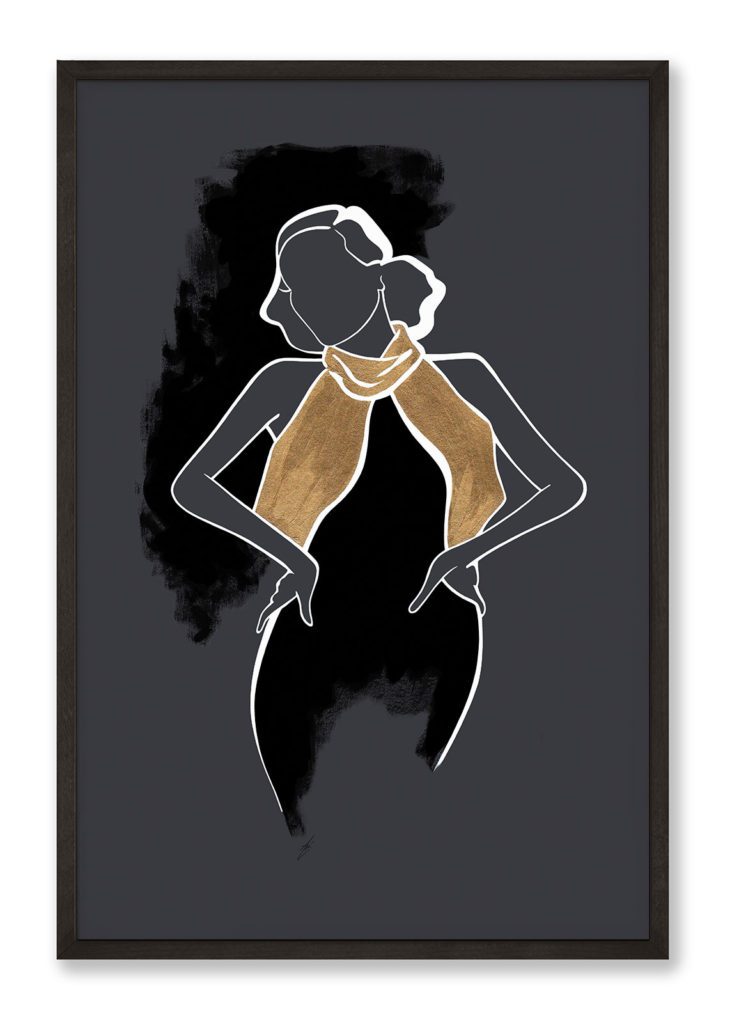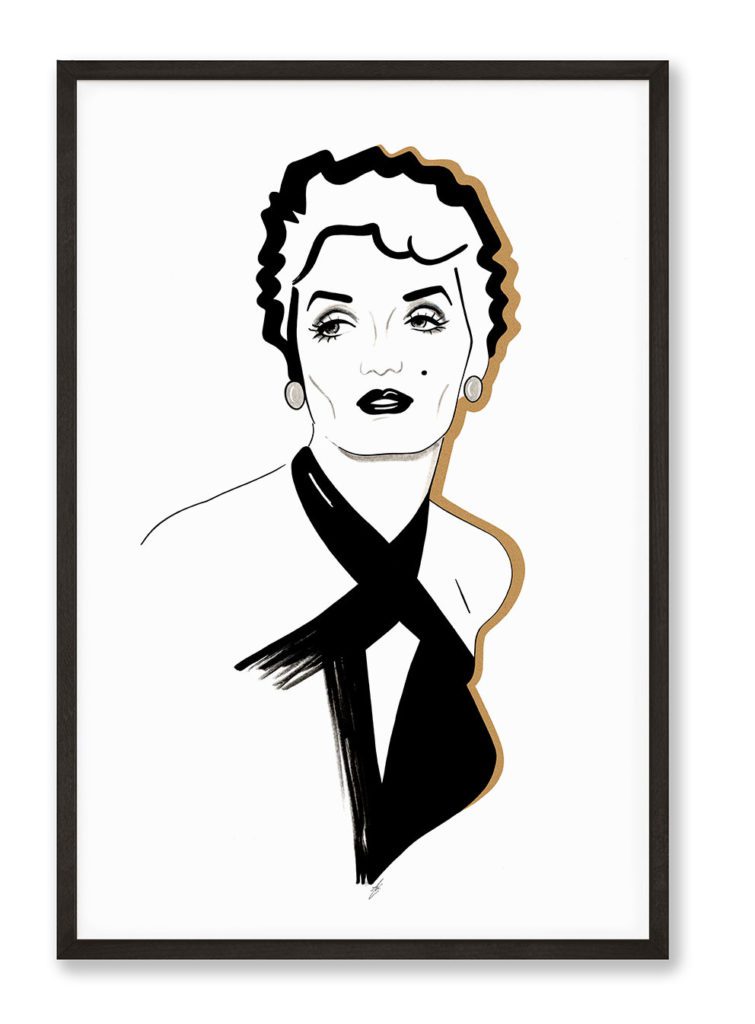Marion Davies
Actress, producer and Hearst mistress




Hi, I'm Kat!
What I am most passionate about is to inspire you to see that your life is your own and biggest masterpiece.
Marion Davies was probably the most publicised and hyped actress of all of Old Hollywood due to her connection to publishing mogul William Randolph Hearst. She was a talented actress, a producer, a screenwriter, a savvy businesswoman, and a philanthropist.
LISTEN TO THE PODCAST
SUBSCRIBE TO THE PODCAST
Early Life and Entry into Show Business
Marion Cecilia Douras, born on January 3, 1897, in Brooklyn, was the youngest of five children in the Douras family. Her father, Bernard J. Douras, was a lawyer and judge in New York City. Marion had three older sisters: Ethel, Rose, and Reine. Tragically, she also had an older brother, Charles, who drowned, and his name was later given to Marion’s nephew, screenwriter Charles Lederer.
Marion’s education took her to the Sacred Heart religious convent near the Hudson River and later to a religious convent in Tours, France. However, her academic studies were a source of unhappiness for her as she was supervised by Catholic nuns.
Marion’s family had a close association with architect Stanford White, and she grew up hearing about the infamous Evelyn Nesbit sex scandal, which was one of the prominent scandals of the era.
Side note: Who was Evelyn Nesbit und what was the scandal about? Evelyn Nesbit was a famous model during the Victorian age and the prototype of the Gibson Girl. She was raped at the age of 16 by a very much older admirer who happened to be Stanford White, a famous architect in New York. He had groomed her and used and abused her for years. Almost a decade later her then husband shot White in public and was trialled twice. In the aftermath he was expatriated and had to move to Canada. Fun fact: Evelyn Nesbit and John Barrymore were actually lovers when they were young and rekindled their romance almost thirty years later.
As a child, Marion struggled with a stutter, which made her school life miserable due to teasing from classmates and teachers. Eventually, she convinced her mother to allow her to leave school early to escape the torment. It was during her teenage years that Marion decided to pursue a career as a showgirl, inspired by her sister Reine, who adopted the stage name Davies after seeing a billboard advertisement for Valentine Davies. Marion followed suit, and her journey into show business had begun.
Early Career and William Randolph Hearst
Marion’s career in entertainment took off when she began working as a chorus girl in productions such as “Chin-Chin” in 1914, where she made her Broadway debut at the Globe Theatre. When not dancing, she also modelled for illustrators.
In 1916, Marion Davies signed on as a featured player in the Ziegfeld Follies. However, her persistent stutter posed challenges when it came to delivering lines, so she was primarily relegated to dancing routines.
It was during her time in the Follies, while performing at the New Amsterdam Theatre in New York City, that Marion first caught the eye of newspaper tycoon William Randolph Hearst, who became infatuated with her. Hearst’s pursuit of Marion continued as he sent her gifts and flowers. Allegedly, Hearst went to the show every night for eight weeks straight just to see Davies dance. In 1918, Hearst eventually formed Cosmopolitan Pictures just for Davies, asked her to sign a contract and only then they started a relationship.
Hearst used his vast publishing network to promote Davies and her movies using his vast newspaper empire and newsreels to tout her social activities. A Los Angeles Examiner reporter was even assigned to recount Marion Davies’ daily exploits in print and he used the powers of Hedda Hopper and Louella Parsons in the process as well.
Marion Davies was well off, not least thanks to Hearst, and some of her films were very successful at the box office. She is said to have earned 10,000 US dollars a week and had by far the largest bungalow of all actors in the studio, with 14 rooms.
Despite sharing opulent homes across Southern California and Europe for the next three decades, Davies and Hearst never officially married. This was because Hearst’s wife refused to grant him a divorce – or to put it better: her settlement requests were not acceptable to Hearst.
Lita Grey, Charlie Chaplin’s second wife, recounted a conversation in which Davies expressed her feelings about Hearst – he neither was the best lay nor the most charming and she did not need more money and disliked many things about him like his snoring or his wife. But he gave her the feeling of being worthy. And that was the reason she would never leave him.
Nevertheless, both Davies and Hearst engaged in extramarital relationships while living together. Davies had romantic liaisons with fellow actors Charlie Chaplin, Dick Powell, and others. Hearst, on the other hand, had a relationship with chorus girl Maybelle Swor. According to Louise Brooks, a close friend of Davies, Davies was deeply upset by Hearst’s public promotion of Swor’s career, similar to the attention he had previously given to Davies
Over the next decade, Marion Davies appeared in 29 films, with notable roles in films like “When Knighthood Was in Flower” (1922) and “Little Old New York,” which ranked among the top box-office hits of their time. She was hailed as the number one female box-office star and crowned the “Queen of the Screen.”
As the years passed, Hearst’s relentless efforts to promote Marion’s career sometimes had a detrimental effect, and his jealousy led to restrictions on her on-screen interactions and roles. This period saw Marion’s career primarily in historical dramas, contrary to her comedic inclinations.
Socialite and Lady of the Mansion
During the era known as the Jazz Age, Hearst and Davies gained notoriety for hosting extravagant soirées at Hearst Castle, where they entertained prominent figures from Hollywood and the political sphere.
She resided in the “San Simeon” estate in Beverly Hills, consisting of five buildings with 110 rooms and 55 bathrooms, surrounded by gardens, tennis courts as well as two swimming pools, and spent time in “St Donat’s Castle “, a medieval castle in the Vale of Glamorgan in Wales. After seeing photographs in Country Life magazine, Hearst bought the castle in 1925, spent a fortune renovating and modernizing it, and gave Davies the castle, which had since been converted into a palatial country estate.
The parties were legendary, and the quote “This is what God would have built if he had the money” is handed down from George Bernard Shaw after a visit.
Along with Mary Pickford , Marion Davies was considered the best hostess in Hollywood, receiving crowned heads as well as celebrities of the period; Charlie Chaplin, Cary Grant, the Marx Brothers, Greta Garbo, Buster Keaton, Mary Pickford, Jean Harlow and Clark Gable, Elinor Glyn, Hedda Hopper and Louella Parsons. Also politicians like Calvin Coolidge and Winston Churchill as well as adventurer Charles Lindbergh or author P. G. Wodehouse. Visitors gathered each evening at Casa Grande for drinks, dined and then watched the latest movie in the theater before retiring to the luxurious guest houses During the days, they admired the views, rode, played tennis, bowls or golf and swam in the pool. The castle was under almost continual construction from 1920 until 1939, with work resuming after the end of World War II until Hearst’s final departure in 1947.
Sound Films and Career Decline
The advent of sound films posed challenges for Marion Davies, given her persistent stutter. Nevertheless, she continued to make films during the early sound era, with roles in movies like “The Florodora Girl” (1930) and “Going Hollywood” (1933) alongside Bing Crosby.
Despite her talent and contributions to Hollywood, Marion’s career was hindered by Hearst’s insistence on her playing dramatic historical parts instead of the comedic roles she excelled in.
By the late 1930s, Marion’s career began to decline, partly due to Hearst’s influence and her personal tragedies, including the death of her niece Pepi Lederer. Lederer was a lesbian who maintained romantic relationships with Marion Davies’ close friend Louise Brooks and Kay McKinnon. She was very often at the estate of Davies and Hearst and got away with many mischievous things – like even stealing the red wig of Elinor Glyn. We come full circle in this podcast, you see – everything is connected to everything. And to cast the net even wider – do you know who one of the pall-bearers at her funeral was? Costume designer Orry-Kelly.
Her final film for Warner Brothers was “Ever Since Eve” (1937), and after a brief hiatus, she officially retired from acting.
By 1937, William Randolph Hearst found himself in dire financial straits, drowning in a staggering $126 million debt (equivalent to an eye-popping $2,564,916,667 in 2022). To aid him, Davies sold her jewelry, stocks, bonds, and wrote a check for $1 million.
Consequently, the dissolution of Hearst’s Cosmopolitan Pictures in 1938 marked a turning point for Marion Davies. She bid farewell to the film industry and sought refuge in the grandeur of San Simeon.
In her autobiography, Davies would later claim that her decision to step away from acting was driven by a desire to become Hearst’s “companion” after years of toiling in the movie business. However, Davies, known for her unwavering ambition, faced a harsh reality as she reached the age of forty – she could no longer portray the youthful heroines that had defined her earlier career. At gatherings in San Simeon, particularly when under the influence, Davies often bemoaned her retirement and directed her frustrations at those she believed had played a part in her perceived career decline.
As time went on, Davies grappled with a growing alcohol problem, which spiraled further during the late 1930s and throughout the 1940s. She and Hearst retreated into an increasingly secluded existence, all while maintaining the façade of gracious hosts. Yet, as one observer noted, “the life had gone out of their performances.” During World War II, the couple primarily resided at Hearst’s Northern California estate of Wyntoon, only returning to San Simeon in 1945. In 1947, Davies and Hearst left San Simeon for the last time and moved to her home in Beverly Hills.
A New Chapter and Death
Davies cared for Hearst until his death, never left his side, and read to him. Tragedy struck on August 14, 1951, with Hearst’s passing at the age of 88 – after being together for over three decades. And if that was not bad enough, Marion Davies recounted the day of his death as a nightmare.
The evening prior to his death, their home had been bustling with a multitude of people. This gathering deeply distressed Marion, as she felt overwhelmed by the noise and commotion caused by the numerous family and friends who had gathered. The boisterous conversations were particularly unsettling for her, as they seemed to disturb Hearst.
Marion got so upset that she required sedation to calm her nerves. When she eventually awoke, she received the somber news from her niece, Patricia Van Cleve Lake, and Patricia’s husband, Arthur Lake, that Hearst had passed away. During the night, his sons had carried his dead body out of the house and she never saw him again. Marion was not permitted to attend Hearst’s funeral. She later said about his event: “I loved him for 34 years and I didn’t even get to say good-bye to him.”
In his will, Hearst ensured Davies’s financial security, bequeathing her 170,000 shares of Hearst Corporation stock and 30,000 additional shares from a trust fund he had established for her in 1950. This temporarily vested her with a controlling interest in the company. However, shortly thereafter, Davies chose to relinquish this stock voluntarily, selling it to Mrs. Millicent Hearst for a mere dollar. She retained her initial 30,000 shares and maintained an advisory role within the corporation.
With her newfound financial independence, Davies ventured into property investments. She became the proprietor of The Desert Inn in Palm Springs and acquired several properties in New York City, including the Squibb Building at Fifth Avenue and 58th Street, the Davies Building at E. 57th Street, and the Douras Building at E. 55th Street, etching out a new path in the post-Hearst era.
Just eleven weeks and a single day after Hearst’s demise, Davies entered into marriage with sea captain Horace Brown on October 31, 1951, in Las Vegas. He was a cousin of Hearst and apparently looked very much like Hearst himself. However, their union proved to be far from blissful. Their marriage was marred by unhappiness, leading Davies to initiate divorce proceedings twice. Despite Brown’s admission that he had treated her poorly, with a self-deprecating “I’m a beast,” Davies inexplicably took him back, humorously remarking, “I don’t know why, I guess because he’s standing right beside me, crying. Thank God we all have a sense of humour.”
In 1956, after years of heavy drinking, Davies suffered a minor cerebral stroke that left her changed and less vibrant than before. Three years later she was diagnosed with cancer. Her last appearance was in 1960 on “Hedda Hopper’s Hollywood”. During her battle with cancer her friend Joseph P. Kennedy, father of the later president JFK, arranged for specialists to care for her. Shortly after she underwent surgery. Unfortunately, she fell during her recovery period and broke her leg. She never got back to full health and died a mere months later.
Her funeral was attended by over 200 mourners, including many of her old Hollywood friends like Mary Pickford, Harold Lloyd, Charles “Buddy” Rogers, Glenn Ford, Kay Williams, and Johnny Weissmuller.
Hearst-Davies Love Child
Rumors dating back to the early 1920s have hinted at a secret child born between 1919 and 1923, attributed to the romantic liaison of Davies and Hearst. This child, later identified as Patricia Lake (formerly Van Cleve), publicly presented herself as Davies’ niece. Patricia Lake passed away on October 3, 1993, due to complications from lung cancer in Indian Wells, California. Shockingly, just before her passing, her son made a stunning revelation, claiming that Lake disclosed her true parentage—asserting she was indeed the biological daughter of Davies and Hearst. Astonishingly, no public acknowledgment of this alleged paternity ever surfaced, even after the deaths of Hearst and Davies. The revelation found its way into Lake’s newspaper obituary.
According to the intriguing tale, Hearst arranged for Lake to be born in secret in a Catholic hospital near Paris, sometime between 1919 and 1923. Subsequently, the child was entrusted to Davies’ sister, Rose, who had tragically lost her own infant. Rose and her husband, George Van Cleve, raised Lake as their own, skillfully concealing her true parentage. Hearst contributed to Lake’s education, and both Hearst and Davies maintained a notable presence in her life. Remarkably, Davies is said to have disclosed Lake’s genuine lineage when the child was just 11 years old. Furthermore, Hearst supposedly confirmed his fatherhood on her wedding day at the age of 17, where both Davies and Hearst proudly gave her away.
Nevertheless, compelling evidence casts skepticism over these claims. Lake’s documented birthdate in 1919 aligns with birthday telegrams and photographic records. Notably, Davies did not embark on her first European journey until 1922. Furthermore, no trace of pregnancy is evident in Davies’ film appearances from 1919. In response to allegations of Lake’s parentage, a Hearst Castle spokesperson dismissed it as an ancient and unsubstantiated rumor.
The Ince Scandal
In November 1924, a tragic incident occurred during a weekend party on Hearst’s yacht, the Oneida, involving Thomas Ince, a film producer. Ince allegedly experienced acute indigestion during the yacht party and was later removed from the vessel in San Diego with the assistance of Hearst’s studio manager, Dr. Daniel Goodman. Ince was then transported by train to Los Angeles but was taken off the train at Del Mar when his condition worsened. Medical attention was provided by Dr. T. A. Parker and a nurse named Jesse Howard. Ince reportedly mentioned having consumed strong liquor on Hearst’s yacht. Ultimately, Ince passed away at his Hollywood residence.
Following Ince’s death, rumors began circulating that Hearst had fatally shot Ince due to Ince making unwanted advances towards Davies. An alternate version of the rumor suggested that Hearst mistook Ince for Charlie Chaplin, who was allegedly involved with Davies, leading to a violent confrontation out of jealousy. Chaplin’s valet claimed to have seen Ince being carried off the yacht with a bleeding head wound, corroborating the rumors. Screenwriter Elinor Glyn, who was present at the party, asserted that everyone on the yacht had been sworn to secrecy, raising suspicions.
Despite the ongoing rumors, a public inquiry by District Attorney Chester C. Kempley of San Diego officially attributed Ince’s death to heart failure resulting from acute indigestion. Three physicians and a nurse had attended to Ince before his passing. Nevertheless, the rumors persisted, with some suggesting that Ince was murdered due to a jealous dispute over Davies.
The Susan Kane Story
In Orson Welle’s “Citizen Kane” (1941), the character of Susan Alexander Kane has often been mistaken for being inspired by Marion Davies. However, Welles himself consistently refuted this notion and asserted that Susan Alexander was not based on Davies.
Nevertheless, the release of the now famous movie caused a severe blow to Marion Davies’ reputation as the movie was a not very veiled biopic on William Randolph Hearst and Davies’ as his Mistress was immediately identified to be the inspiration behind Kane’s second wife. Many resemblances piled on the evidence like the wife being a showgirl, having limited talent, being promoted nevertheless and living with Kane on a huge estate.
That’s why Davis later on was deemed an unremarkable actress, her films unimpressive and unprofitable. Obituaries during her prolonged battle with cancer even perpetuated the falsehood that she was a mediocre and unpopular actress during her lifetime. However, this narrative does not align with reality. Contrary to this myth, most of Davies’ films were commercially successful, and she remained a beloved star throughout her career. Notably, she held the title of the number one female box office star for the years 1922–23, primarily due to the immense popularity of “When Knighthood Was in Flower” (1922) and “Little Old New York” (1923), both of which ranked among the top box-office hits of their respective years.
Orson Welles himself clarified in his autobiography “The Times We Had” (1975) that Susan Alexander Kane was not Davies. He highlighted the stark differences between Susan and Marion, emphasizing that Marion was Hearst’s cherished treasure for over three decades, while Susan was portrayed as a puppet and a prisoner in the film. He emphasized that Marion Davies was a far more exceptional and remarkable woman than the character in “Citizen Kane.”
In the years following her death, there was a reevaluation of Marion Davies’ legacy. Greater access to her notable films allowed for a more accurate assessment of her talents as an actress. Over time, film critics grew more appreciative of her contributions, especially in the realm of comedy. Biographers noted that if Hearst had allowed Davies’ exceptional comedic talents to shine in a series of bright comedies, her screen reputation would have been better shielded from the controversies surrounding “Citizen Kane” and her legacy kept alive.
Legacy and Influence
In her later years, Davies garnered a reputation for her benevolence. She was particularly noted for her acts of kindness and extensive charitable contributions. During the 1920s, she had developed a keen interest in children’s charities, generously donating over $1 million to these causes. In 1952, she made a substantial donation of $1.9 million to establish a children’s clinic at UCLA, subsequently bearing her name. This clinic, later renamed the Mattel Children’s Hospital in 1998, stood as a testament to her enduring commitment to combat childhood diseases through the Marion Davies Foundation, leaving a lasting impact on the world of philanthropy.
Lessons
- Find the place that you are valued
- Always play your strengths and do not let anybody tell you what to do – you know yourself best
- Invest wisely and surround yourself with those knowing more than you know – that’s how you learn
With all my love!
xx





